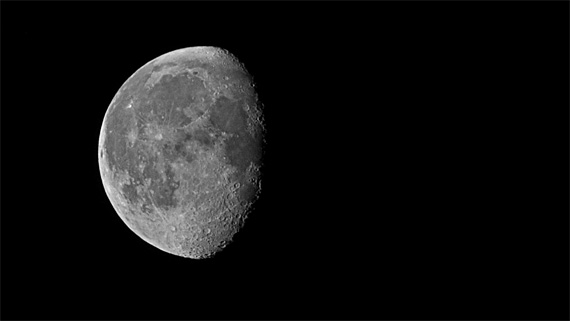Well, what I’m going to discuss in this post is how to take a picture of The Moon. It’s a subject that is relatively easy to shoot if you know what you’re doing. It doesn’t move a lot and can create a very professional shot. Whether it’s a full moon, half moon or crescent moon it doesn’t matter. Just find a good spot and a clear night and you’re away!
Necessary Items for Good Moon Photography:
- Your Camera
- At least a 300mm zoom lens (preferably more)
- A Tele-converter
- A Tripod
- A Remote Shutter Release Controller
- Patience
However, as we’re all on budgets another way to get around this is to get what’s known as a Tele-converter. This is a sort of magnifying glass which you screw onto the end of your lens barrel and will times your focal length by the factor of the converter. Usually this is 2x or 1.4x. So if you have a 300mm lens, using a 2x Tele-converter will make it a 600mm lens. You may loose a bit of your frame size but it’ll work great. Another advantage is that you can double up these converters. So if you used a 2x and a 1.4x your 300mm zoom lens would be a whopping 840mm. This will start to get the Moon quite large in your frame.
So, you’ve got your combination of good Lens and Converter, next thing you need is a stable tripod, especially if you have a huge lens on the camera. As you’ll be using long shutter speeds because you’re shooting at night you will need the camera to be completely still. This is also why you should purchase a remote shutter release control. This will enable you to line up the shot then stand back and press the shutter from afar, thereby preventing any shake when you press the button. Clever!
A few things to bear in mind when doing this though. The Moon moves quicker through the sky than you think so if you’re taking a while to set up everything keep checking the shots as you want it. Also, as the Moon is a large source of reflected light from the Sun in a pitch black surround you’ll need to make sure you expose it properly. I’d advise shooting in RAW mode so you can tweak the exposure in a software program afterwards as you don’t want all that time and effort to go to waste.
There you have it. Don’t waste time, get your kit together and start shooting!
Credit to http://www.picturecorrect.com




No comments:
Post a Comment